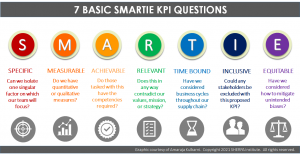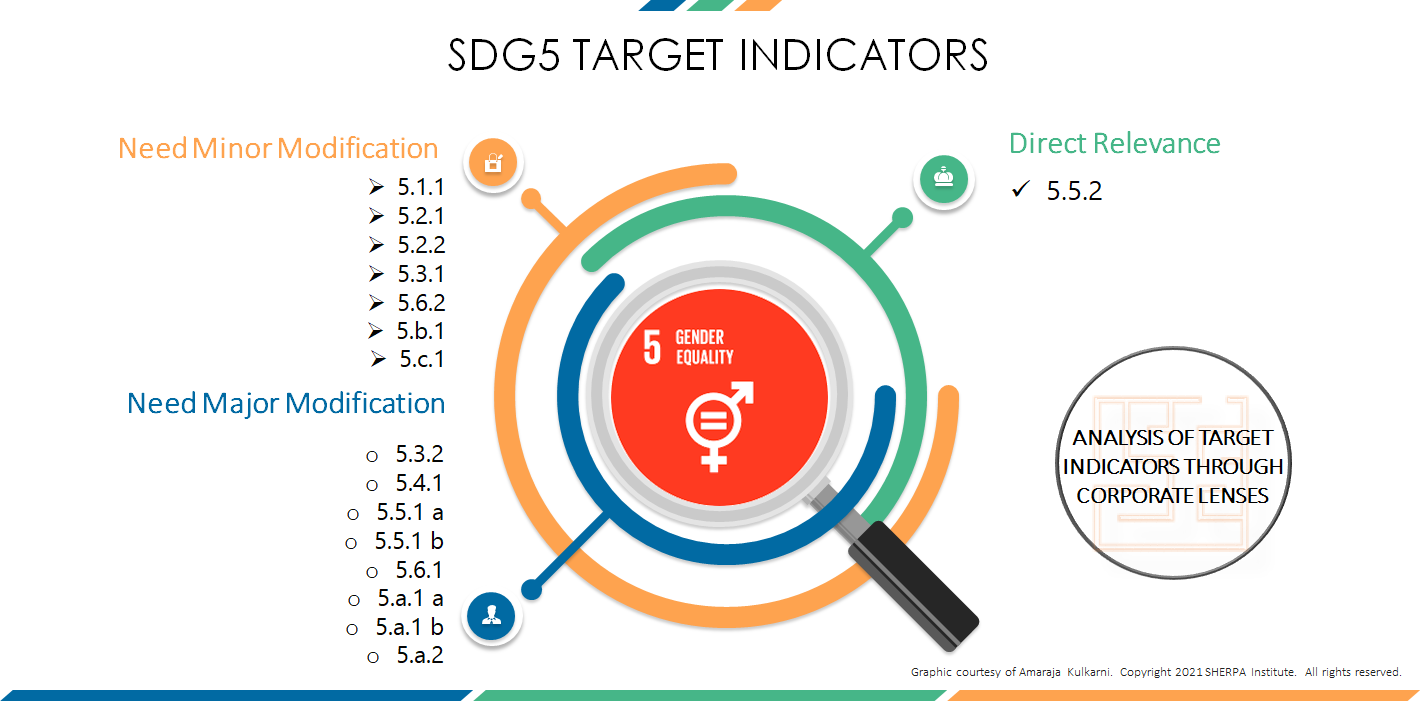Thank you for your interest in SDG5. Despite global advancements in women’s rights for the last century, Gender Equality is yet to be achieved. Women across the world continue to endure second class status, and even cultural classification as property, particularly in religious extremism. We need you and your business to join our efforts!
SDG5 has nine Targets and 14 performance indicators ostensibly. Two targets have two separate measures, so using business practices, there are really 16 indicators in SDG5. As a common business practice, a key performance indicator (KPI) should be specific and measure only one parameter. Only one of these indicators is likely applicable to your business without any modification. About almost half of the remaining indicators are relevant with minor modification. And half of the indicators have little to no relevance for corporations.
You were probably surprised to learn that only one of the fourteen SDG5 indicators is useful for business. Given that the United Nations indicators are articulated at a national level, we see this business disconnect across all the SDGs and our team will bridge the gap. The SDGs were ratified in 2015 without any Target Indicators. Can you imagine launching a strategic initiative in your business without planning to measure progress? In 2017, the Target Indicators were added; and they are periodically reviewed and updated. But they are not written for businesses.
In our Corporate Guidebook, chapter by chapter, we propose possible business KPIs which are specific, measurable, actionable, relevant, and timebound (SMART). For SDG5, the addition of inclusive and equitable (SMARTIE) is a business imperative. We will use industry scenarios as examples to share KPIs that would work in business for each Target. You have the opportunity to use these examples as guides to create your own KPIs for your own business’s situation and strategy.

Another opportunity for firms is to measure some sparsely analyzed areas of Gender Equality. If you don’t know the size of the problem, it can’t be addressed. Some SDG Targets have readily available data, such as number of women in executive positions. A reason for lack of measurement for other SDG5 Target Indicators is that they deal with disturbing personal situations and problems in society around the world, including highly taboo subjects. Be prepared to engage in your local community on sensitive local issues. You will be using specific KPIs for your community and your business opportunities.
Once you’ve chosen the SDG5 Targets you wish to impact and the opportunities your team will pursue, you can develop your own KPIs. This is a strategic activity, which should include diverse stakeholders from all functional areas and levels of the organization. Consider a retail organization, which should get input from beyond senior executives, gathering information from cashiers, customer service and warehouse employees.
Your KPIs should be both leading and lagging, which serve different purposes. Lagging indicators measure performance after activities have occurred; for example, last quarter’s retail sales. There is nothing that can be done at this point to change those sales results. However, it may influence reactionary short-term plans. In response to poor sales in the previous quarter, a store could offer temporary deep discounts to drive top-line revenue.
While lagging indicators allow us to react, it is also important to have leading indicators. These measure the conditions you’ve put in place, to achieve objectives. This allows you time to make improvements and stay on track. Using more examples from retail, leading indicators include new customer loyalty card registrations, or new gift registries. For every business objective, it is important to have a minimum of two KPIs, both leading and lagging.
In our next SDG5 Insights Article, we will share one example of an SDG5 Indicator that we have modified for potential business use using the SMARTIE approach and producing both leading and lagging KPIs. If you have any questions or thoughts on this topic, we invite you to share below. Has your business produced unique KPIs for SDG5? We’d love to hear from you! Thank you again for your interest and time today.
*We hope you look forward to SDG 5 Contributor Shikha Mittal’s series “A Gendered Response to the Pandemic”.
Copyright 2021 SHERPA Institute. All rights reserved – please cite and link to this web page.


